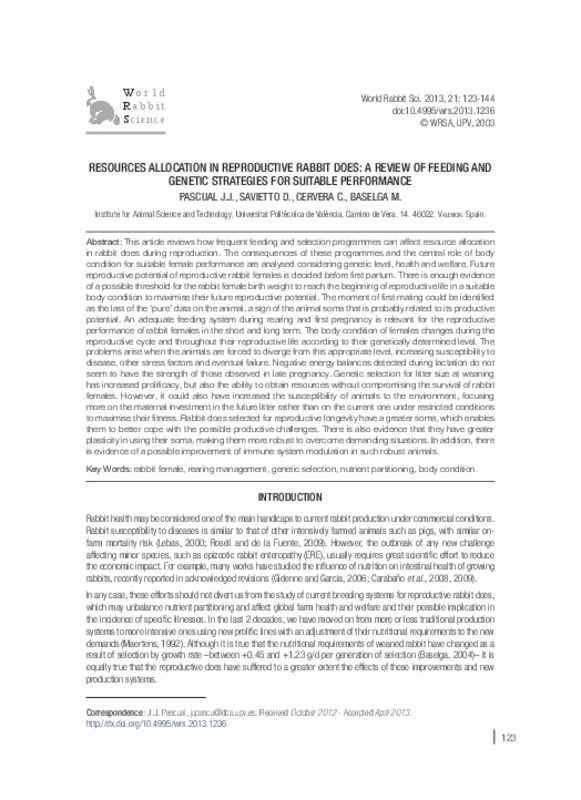JavaScript is disabled for your browser. Some features of this site may not work without it.
Buscar en RiuNet
Listar
Mi cuenta
Estadísticas
Ayuda RiuNet
Admin. UPV
Resources allocation in reproductive rabbit does: a review of feeding and genetic strategies for suitable performance
Mostrar el registro completo del ítem
Pascual Amorós, JJ.; Savietto, D.; Cervera Fras, MC.; Baselga Izquierdo, M. (2013). Resources allocation in reproductive rabbit does: a review of feeding and genetic strategies for suitable performance. World Rabbit Science. 21(3):123-144. https://doi.org/10.4995/wrs.2013.1236
Por favor, use este identificador para citar o enlazar este ítem: http://hdl.handle.net/10251/32794
Ficheros en el ítem
Metadatos del ítem
| Título: | Resources allocation in reproductive rabbit does: a review of feeding and genetic strategies for suitable performance | |
| Autor: | Savietto, Davi Cervera Fras, Mª Concepción Baselga Izquierdo, Manuel | |
| Entidad UPV: |
|
|
| Fecha difusión: |
|
|
| Resumen: |
[EN] This article reviews how frequent feeding and selection programmes can affect resource allocation in rabbit does during reproduction. The consequences of these programmes and the central role of body condition for ...[+]
|
|
| Palabras clave: |
|
|
| Derechos de uso: | Reserva de todos los derechos | |
| Fuente: |
|
|
| DOI: |
|
|
| Editorial: |
|
|
| Versión del editor: | https://doi.org/10.4995/wrs.2013.1236 | |
| Código del Proyecto: |
|
|
| Agradecimientos: |
This work was carried out thanks to the research developed in the last decade with the support of different
grants from the Spanish Ministry of Science and Innovation (AGL2000-0595-C03-03, AGL 2004-02710, AGL2008-00273 ...[+]
|
|
| Tipo: |
|









